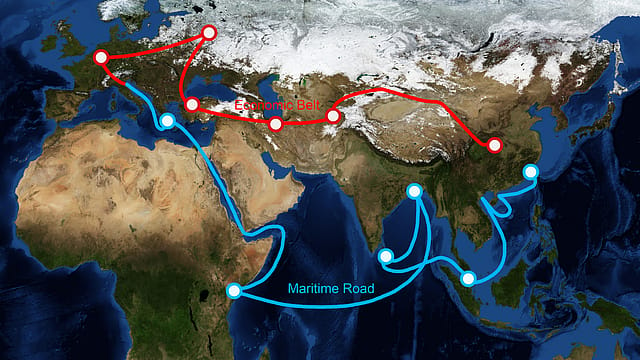The Belt and Road Initiative amid trade war and bombs
ADVERTISEMENT

For the last six months, in a series of essays, I have argued that China’s Belt and Road Initiative (BRI) is a strategic opportunity for India—and it does not have to join the initiative to use this advantage.
All it needs to do is use China’s doubts about its multi-billion dollar investment in the China Pakistan Economic Corridor (CPEC) worth (estimates vary) $15 billion-$62 billion in view of recent happenings.
The attack on The Pearl Continental Hotel in Gwadar—the port Pakistan hopes will become its Dubai-like economic engine—by militants of the Baloch Liberation Army on May 12 is the latest incident which should cast doubt on the capability of Pakistani forces to defend and secure Chinese investments and citizens there. Last year, there was a strike on the Chinese consulate in Karachi. It would also not escape China’s notice that 11 weeks after the Balakot airstrike by India inside Pakistani territory in response to the terror attack at Pulwama, most of Pakistani airspace (10 of 11 airways) remains closed. This also means the cash-starved Pakistani economy loses out on flight fees from airlines.
January 2026
Netflix, which has been in India for a decade, has successfully struck a balance between high-class premium content and pricing that attracts a range of customers. Find out how the U.S. streaming giant evolved in India, plus an exclusive interview with CEO Ted Sarandos. Also read about the Best Investments for 2026, and how rising growth and easing inflation will come in handy for finance minister Nirmala Sitharaman as she prepares Budget 2026.
With the trade war between the U.S. and China escalating, the Middle Kingdom needs every new route and receptacle of trade that it can access to keep its economic arteries pumping amid a slowdown. The trade route from Kashgar in the Xinjiang region to Gwadar is key to the calculations of China, the world’s largest energy and coal producer, exporter and consumer; for from Gwadar, it will have easy access to Central Asia and Africa through the Persian Gulf. “China is presently and will remain the single most influential country in global energy markets in the next decades,” the researcher Frank Umbach has noted. “China alone will account for around 40% of the world energy demand rise from 2011 to 2025 and for some 31% between 2011 and 2035. China’s electricity demand may even double between 2012 and 2040.”
As the trade war with America explodes, China needs to secure its future growth and energy stability through large investments via the BRI. The question is, if the trade war with the U.S. turns more bitter, how long can those investments be sustained?
For Pakistan, which is once again being bailed out with a $6 billion loan from the International Monetary Fund on stringent terms, the CPEC is its solitary lifeline towards economic stability. Without the success of CPEC, it is hard to see how the Pakistani economy could recover and avoid the risk of being a nation living from grant to grant. How long a country of 200 million can bear economic collapse in this way is anybody’s guess.
All this means is that any new government in New Delhi would be in a scenario where both its primary adversaries—China and Pakistan—are more amenable to pushing stability for their own economic goals. After the Pulwama attack, India has fulfilled two of its declared goals—it crossed the red line by conducting an air strike inside Pakistan, and it was able to convince China to lift its veto on declaring Masood Azhar, the leader of the Jaish-e-Mohammed jihadi group which claimed responsibility for the attack, a global terrorist at the United Nations.
These are fortuitous tailwinds for any new government in Delhi—and not merely because of the export opportunities created in a trade war between the U.S. and China. When economic growth becomes such a priority, then other ideological battles take a back seat, making space for the compromise necessary for peace negotiations.
Pakistan and China are not the only ones in economic trouble. India has growth worries of its own. It is the world’s fastest growing major country but that is only because growth in China is slowing. But consumer demand is slowing in India too—the fall especially in rural demand has the potential to cause long-term damage to the Indian economy. The last thing India wants is the opinion to spread that it is in the process of getting stuck in an income trap. And another skirmish with Pakistan would be distracting and expensive for India too.
So, a small perfect storm worked by economic factors is brewing which might provide the first steps towards one more serious pitch for peace.
Views are personal.
